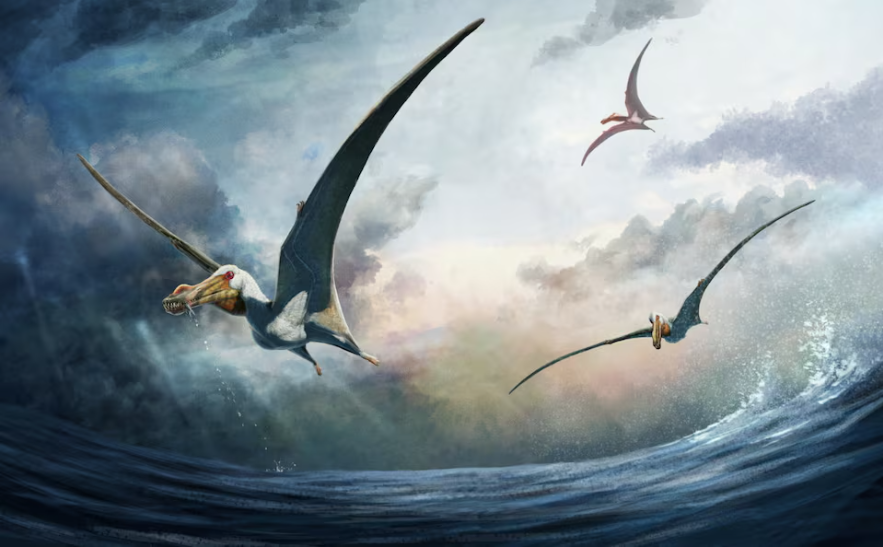
©Curtin University/Gabriel Ugueto/Handout via REUTERS
Vocabulary:
- soar /sawr/
- paleontology /pey-lee-uhn-TOL-uh-jee/
- fossilization /fos-uh-ly-ZAY-shuhn /
- sediment /SED-uh-muhnt/
- curator /kyoo-REY-ter/
[verb] – to fly or glide high in the air with great ease and grace
The eagle soared majestically above the mountain peaks.
[noun] – the scientific study of organisms that lived on earth before there were written records, esp. by examining fossils
Paleontology helps us understand how dinosaurs lived and evolved millions of years ago by studying their fossilized remains.
[noun] – the process by which organic materials are converted into fossils
The fossilization of dinosaur bones provides valuable insights into prehistoric ecosystems and the evolution of ancient species.
[noun] – small particles of soil, sand, and rock that are carried and deposited by water, wind, or glaciers
The geologists analyzed the sediment layers in the ancient lakebed to reconstruct the environmental conditions millions of years ago.
[noun] – a person responsible for managing and organizing a collection, typically in a museum, library, or archive
The museum curator meticulously cataloged each artifact for the upcoming exhibition.
Article reading:
Haliskia’s remains provide unprecedented insights into the anatomy and behavior of these ancient flying reptiles. Pentland noted the unusual preservation of throat bones, typically as thin as spaghetti, revealing a likely muscular tongue that could have provided an advantage in trapping live prey such as fish and squid-like cephalopods. Haliskia’s fossilization was facilitated by sediment burial at the bottom of the Eromanga Sea, allowing for its extraordinary preservation. The name Haliskia also honors Kevin Petersen, an avocado farmer turned museum curator who discovered the remains in 2021.
Discussion Questions:
- Have you ever visited a museum or fossil site that showcases prehistoric creatures like pterosaurs? If so, what was your experience like? If not, would you be interested in visiting such a place?
- If you visited a museum displaying pterosaur fossils, what specific aspects would you be most interested in learning about?
- Do you think learning about ancient creatures like Haliskia through fossils can help us understand more about the history of our planet?
- How might the discovery of Haliskia’s fossils influence future paleontological research and discoveries in Australia and globally?
- Considering the delicate nature of pterosaur skeletons, what challenges do you think scientists face in accurately reconstructing the appearance and behavior of these ancient flying reptiles?
Summarization
Describe:
- ancient
- spike-shaped
- skeleton
- preservation
- well-preserved